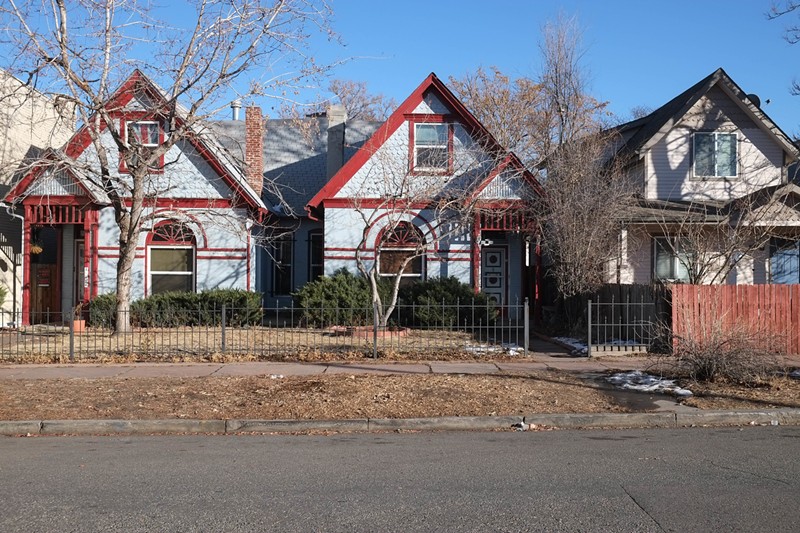According to a report from Construction Coverage, Denver’s 36.8 percent increase in housing inventory during the first quarter of 2024 is the highest among all large cities in the United States.
Local data tells a similar story, showing major increases in the last month alone.
The Denver Metro Association of Realtors (DMAR) market trends report for June showed 10,214 active listings on the market at the end of June, a 68.27 percent increase from the same month last year.
“That's a pretty significant number,” says Denver real estate expert Steve Danyliw. “The rest of the country is experiencing increased inventory, but I can definitely say that our numbers are significantly high.”
The last time there were over 10,000 active listings in Denver was September 2013, dating back even further than the COVID-19 downturn in the market.
That’s nothing compared to the record-high 31,989 listings Denver had in 2006, but 10,214 is over nine times higher than the all-time low in January 2022, when just over 1,100 listings were available. The majority of those listings are not new construction, according to Danyliw, who says that new builds represented less than 10 percent of inventory in May.
According to DMAR data, Denver had 2.78 months of inventory at the end of June. Months of inventory, sometimes called absorption rate, measure how long it would take for every available home to sell if there were no new listings.
“If the months of inventory is very small, that's going to favor the home seller, like we've experienced over the last several years,” Danyliw says. “In 2021 and 2022, the absorption rate during that period was sometimes measured at a little over a week.”
Danyliw says that fifteen years ago, four months of inventory was considered a balanced market between buyers and sellers. However, during that time there were more distressed sales from foreclosures due to predatory lending, eventually leading to the mortgage market collapse; Danyliw says data shows around 50 percent of sales at the time were distressed.
Since financial regulations were established in light of the 2008 financial crisis, distressed sales have only represented less than half a percent of the sales in a given month. Because of that shift, the bar for a balanced market is lower.
“We're starting to experience more balance in the marketplace, even though we're not at four months of inventory,” Danyliw says.
According to Danyliw, this is the closest Denver has been within the last ten years to achieving a balance between buyers and sellers. Of the homes currently for sale, over 50 percent have had a price reduction. Homes with price reductions have been on the market for an average of 88 days compared to a 43-day average for those without a price reduction yet, he notes.
Danyliw says homes would sell within a week in 2022, often within one weekend. While that's not as common in 2024, great homes in desirable areas are still getting multiple offers and moving very quickly, he adds. Danyliw forecasts that if the interest rate for mortgages drops below the 7 percent it’s held at for the last few years, that could bring even more homes and buyers to the market.
“I don't expect the rates ever to come back down to 2.5 or 2.75 percent,” he says. “That is way behind us. But it has to get somewhere realistic to where even the sellers will get back out into the marketplace.”
[
{
"name": "Air - MediumRectangle - Inline Content - Mobile Display Size",
"component": "12017618",
"insertPoint": "2",
"requiredCountToDisplay": "2",
"watchElement": ".fdn-content-body",
"astAdList": [
{
"adType": "rectangle",
"displayTargets": "mobile"
}
]
},{
"name": "Editor Picks",
"component": "17242653",
"insertPoint": "4",
"requiredCountToDisplay": "1",
"watchElement": ".fdn-content-body",
"astAdList": [
{
"adType": "rectangle",
"displayTargets": "desktop|tablet"
},{
"adType": "rectangle",
"displayTargets": "desktop|tablet|mobile"
}
]
},{
"name": "Inline Links",
"component": "18838239",
"insertPoint": "8th",
"startingPoint": 8,
"requiredCountToDisplay": "7",
"maxInsertions": 25
},{
"name": "Air - MediumRectangle - Combo - Inline Content",
"component": "17261320",
"insertPoint": "8th",
"startingPoint": 8,
"requiredCountToDisplay": "7",
"maxInsertions": 25,
"watchElement": ".fdn-content-body",
"astAdList": [
{
"adType": "rectangle",
"displayTargets": "desktop|tablet"
},{
"adType": "rectangle",
"displayTargets": "desktop|tablet|mobile"
}
]
},{
"name": "Inline Links",
"component": "18838239",
"insertPoint": "8th",
"startingPoint": 12,
"requiredCountToDisplay": "11",
"maxInsertions": 25
},{
"name": "Air - Leaderboard Tower - Combo - Inline Content",
"component": "17261321",
"insertPoint": "8th",
"startingPoint": 12,
"requiredCountToDisplay": "11",
"maxInsertions": 25,
"watchElement": ".fdn-content-body",
"astAdList": [
{
"adType": "leaderboardInlineContent",
"displayTargets": "desktop|tablet"
},{
"adType": "tower",
"displayTargets": "mobile"
}
]
}
]











